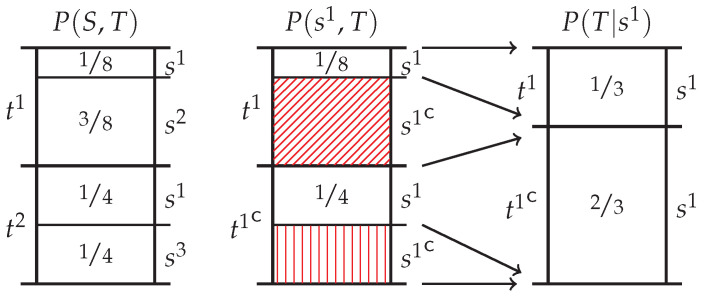Figure 1.
Sample probability mass diagrams, which use length to represent the probability mass of each joint event from . (Left) the joint distribution ; (Middle) The occurrence of the event leads to exclusions of the complementary event which consists of two elementary event, i.e., . This leaves the probability mass remaining. The exclusion of the probability mass was misinformative since the event did occur. By convention, misinformative exclusions will be indicated with diagonal hatching. On the other hand, the exclusion of the probability mass was informative since the complementary event did not occur. By convention, informative exclusions will be indicated with horizontal or vertical hatching; (Right) this remaining probability mass can be normalised yielding the conditional distribution .

